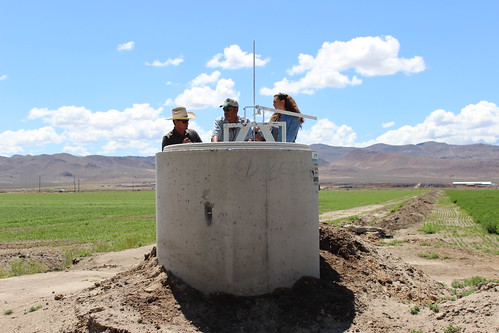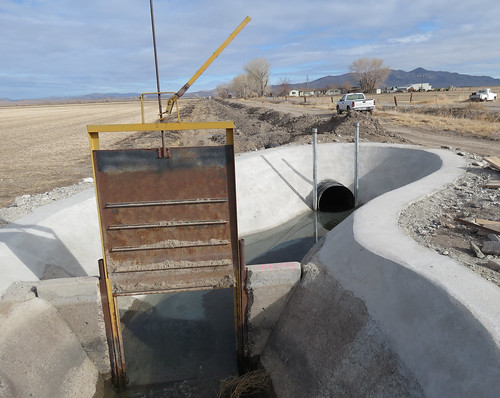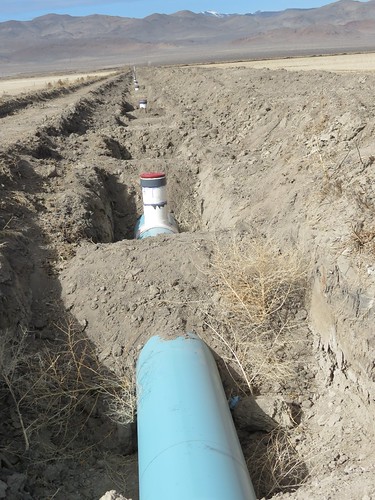
Turn on any news station or open a newspaper in Nevada, and you’ll see the effects of the severe drought, now in its third year in the Silver State. It is leaving farmers and ranchers devastated.
Luckily, before the drought’s onslaught, the Moreda Dairy in Yerington, took advantage of a conservation program offered by USDA’s Natural Resources Conservation Service to improve their farm’s irrigation system, and its owners say they’re thankful they did.
Henry Moreda, his brother, Ed, and his mother, Janet, have run Moreda Dairy in Yerington, 80 miles southeast of Reno, since 1970. The Moredas no longer operate a dairy, but now focus on producing irrigated quality hay and beef cattle.
At first, the Moredas admit they were a bit skeptical of changing their method of irrigating hay which consisted of water canals and ditches. But after Yerington NRCS District Conservationist Ed Biggs explained how funding through the Environmental Quality Incentives Program (EQIP) could be used to improve irrigation system efficiency by replacing the old earthen canals and ditches with newly installed underground pipelines, they decided to participate in the NRCS conservation program in 2010.
“Our farmland is very flat,” Henry said. “But once the first irrigation project was installed, and we turned the water on and held our breath, we quickly saw that what took us one and one-half hours to irrigate using a ditch, now took 15 minutes. We were sold on the benefits of NRCS’ EQIP after that.”

In addition to taking on this large-scale irrigation project, the Moredas entered into a Conservation Stewardship Program contract on 1,085 acres. Through this program they installed conservation enhancements like wildlife-friendly fencing as well as an escape ramp out of a livestock water trough. This ramp benefits small wildlife like bats, birds and rodents that might drink from the trough.
Two more EQIP contracts followed in 2012, both irrigation pipeline projects, and the results speak volumes. In total, the three irrigation projects resulted in 24,875 feet of pipe being installed on 4.7 miles of farmland. Additionally, 10 water control structures were installed to control the direction or rate of water flow in order to maintain a desired water surface elevation. These structures benefited 356.7 acres of hay land.
“If we hadn’t implemented these irrigation measures on our alfalfa fields, one quarter of our ranch wouldn’t get water this year, which is at least 100 acres,” Ed said. “Our yields have improved. The water efficiency has improved and the water savings is important at a time like this.”
The family admits the preparation work for the irrigation projects was more extensive than they had anticipated. To prepare for the pipeline, they dug trenches and then placed a layer of clean soil down to protect the pipeline from being damaged by sharp objects in the ground below.
The initial work was well worth it in the end. The Moredas figure that if they hadn’t installed the irrigation pipelines with financial assistance from NRCS, then 120 acres of alfalfa, which yields 600 tons of hay at about $250 a ton, would have been lost this year.
“That’s a $150,000 loss. So, the EQIP projects have paid for themselves in the first year,” Henry said. “In fact, we’ll get all four cuttings this year, instead of just one.”
The results of the irrigation projects have even piqued the curiosity of neighboring farmers who are struggling through the drought but who are seeing first-hand the fruits of the Moredas’ conservation work.
To get started with NRCS, visit your local USDA Service Center or www.nrcs.usda.gov/GetStarted.

